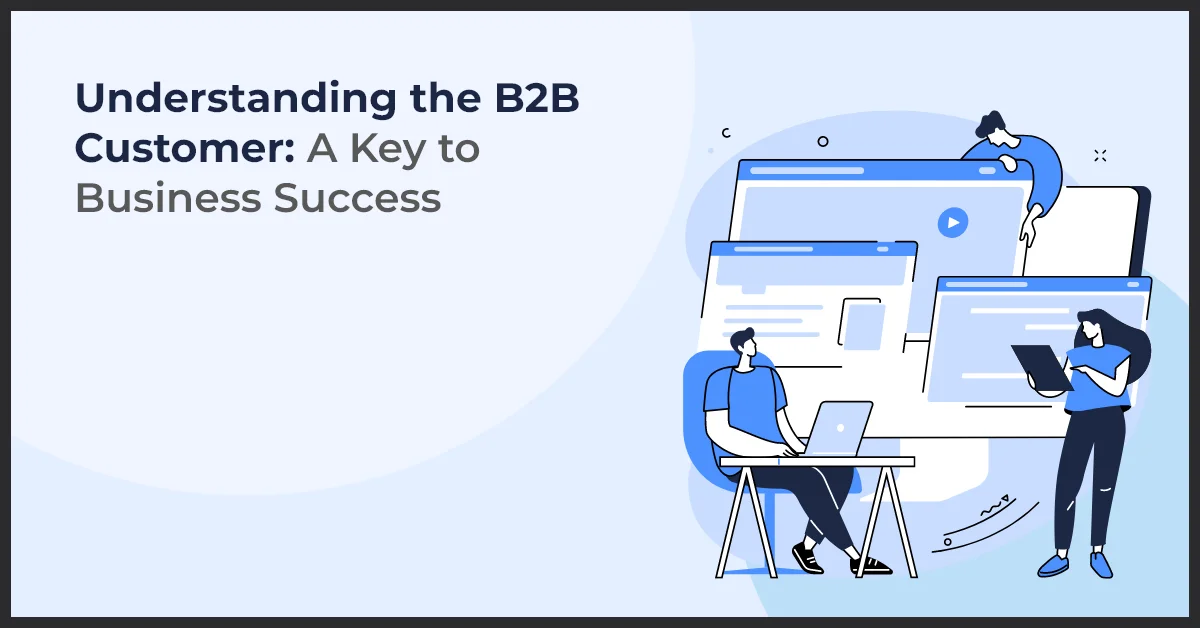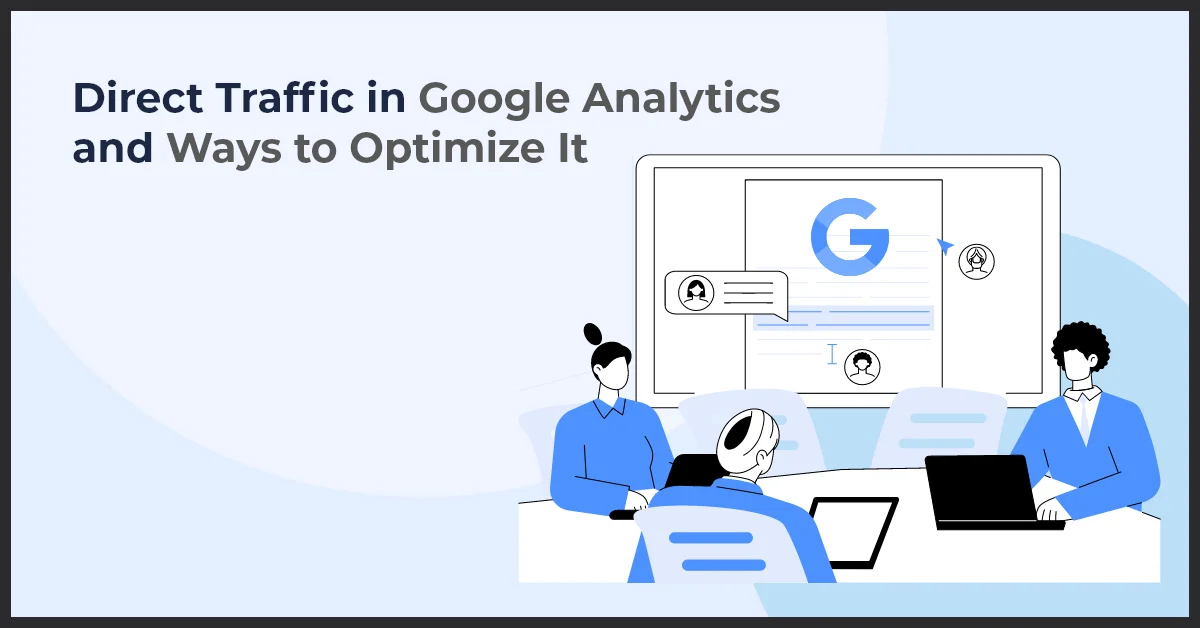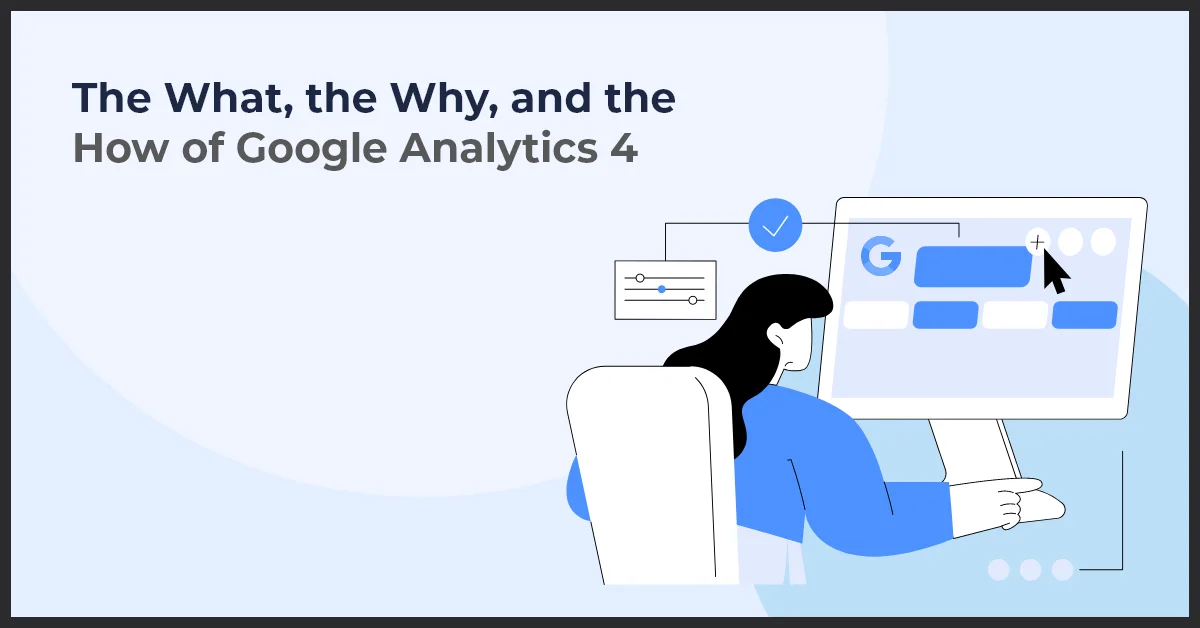Understanding the B2B Customer: A Key to Business Success

Published on: November 1, 2023
Updated on: July 15, 2024
2515 Views
- Analytics
17 min read
Welcome to our comprehensive guide on the B2B customer! In today's business landscape, where connections and partnerships drive growth, having a thorough understanding of your B2B customers is paramount. Let's delve into the definition, characteristics, and differences between B2B and B2C customers, as well as the importance of catering to the unique needs and challenges faced by B2B customers.
What is a B2B Customer?
A B2B customer refers to a customer who is a business or organization, rather than an individual consumer. B2B transactions involve the exchange of goods, services, or information between two businesses. These customers play a critical role in the success of any B2B company.
Key Characteristics and Differences
While B2B and B2C customers share some similarities, they also have distinct characteristics. Unlike individual consumers, B2B customers often make purchasing decisions based on rational factors such as price, quality, and long-term value. They may require customized solutions, and flexible contracts, and prefer building long-lasting relationships.
Additionally, B2B customers usually have a longer buying cycle, involving multiple decision-makers and more complex processes. Understanding these differences is crucial for effective marketing strategies and tailored customer experiences.
The Importance of Understanding B2B Customer Needs and Challenges
Gaining a deep understanding of your B2B customers is fundamental for business success. By identifying their unique needs and challenges, you can develop targeted solutions and provide exceptional customer experiences. This understanding enables you to strengthen relationships, enhance customer loyalty, and ultimately drive business growth.
Moreover, understanding the pain points and obstacles faced by B2B customers allows you to align your products or services to their specific requirements, thus increasing their satisfaction and confidence in your brand. It also enhances your ability to anticipate market trends and proactively adapt your offerings to meet evolving demands.
Remember, in the world of B2B, customers are not just another figure on a balance sheet; they are the building blocks of long-term success. So, embrace the power of understanding your B2B customers, and watch your business thrive!
Understanding B2B Customer Behavior
When it comes to B2B customer behavior, it's crucial for businesses to delve deep into the decision-making process of these customers. By understanding their behavior, companies can tailor their strategies and offerings to meet their needs effectively.
Exploring the decision-making process of B2B customers
Unlike individual consumers, B2B customers often undergo a complex decision-making process. They consider various factors before finalizing a purchase, such as budget constraints, company goals, and the long-term impact of their decisions. By understanding this process, businesses can position themselves as reliable partners and guide customers toward making informed choices.
Factors influencing purchasing decisions in B2B relationships
For B2B customers, multiple factors come into play when making purchasing decisions. These may include the need for cost savings, vendor reputation, quality of products or services, and the ability to meet specific business requirements. By identifying and addressing these factors, companies can increase their chances of winning and retaining B2B customers.
Differences between individual and collective decision-making in B2B contexts
Another important aspect of understanding B2B customer behavior is recognizing the differences between individual and collective decision-making. In B2B relationships, decisions are often made by a group of stakeholders coming from different departments or levels of authority. This means businesses must not only convince individual decision-makers but also align their offerings with the collective goals and needs of the organization.
By comprehending the decision-making process, influencing factors, and differences in decision-making dynamics, businesses can create targeted strategies to effectively engage and satisfy their B2B customers.
Common Issues Faced by B2B Customers
As with any customer segment, B2B customers face their own unique set of challenges and pain points. Identifying and addressing these issues is crucial for businesses looking to build strong relationships and provide exceptional service to their B2B customers.
Product Complexity: B2B customers often deal with complex products or services that require a deep understanding and expertise to fully utilize. This complexity can pose challenges in implementation, training, and ongoing support. It is important for businesses to provide comprehensive resources and training to help their B2B customers overcome these challenges.
Long Sales Cycles: B2B sales cycles are typically longer than those in the B2C space. This is because B2B purchases often involve multiple decision-makers and require extensive research and evaluation. Businesses need to be patient and provide support throughout the entire sales process, ensuring that their B2B customers have the information they need to make informed decisions.
Customization Requirements: B2B customers often have unique customization requirements that may not be readily available off the shelf. This can lead to delays and additional costs if businesses are not equipped to meet these specific needs. By offering customizable options and having robust processes in place, businesses can better cater to the unique requirements of their B2B customers.
When it comes to effective problem-solving and relationship management with B2B customers, businesses should adopt strategies that prioritize open communication, collaboration, and a proactive approach in addressing any issues that arise. By doing so, businesses can strengthen their relationships with B2B customers and ensure mutual success.
Building Strong B2B Customer Relationships
In the world of B2B, building strong relationships with customers is crucial for long-term success. By establishing trust and credibility, businesses can foster loyalty and maximize customer lifetime value. This section will explore the importance of building strong B2B customer relationships and provide strategies for nurturing these connections.
Importance of building trust and credibility with B2B customers
Trust and credibility are the foundation of any successful B2B relationship. When customers trust your business and believe in your expertise, they are more likely to continue working with you and recommend your services to others. Building trust and credibility is achieved through consistent delivery of high-quality products or services, maintaining open and transparent communication, and demonstrating expertise in your industry.
Strategies for nurturing long-term relationships and fostering loyalty
- Stay engaged: Regularly communicate with your B2B customers to understand their evolving needs and offer relevant solutions. This can be done through newsletters, surveys, or personalized emails.
- Provide excellent customer service: Promptly address any issues or concerns, offer quick resolutions, and go above and beyond to exceed customer expectations. This shows your commitment to customer satisfaction and fosters loyalty.
- Offer personalized experiences: Tailor your offerings to meet the specific needs of your B2B customers. This can include personalized pricing, customized product features, or dedicated account managers.
- Build collaborative partnerships: Develop a collaborative mindset with your B2B customers by involving them in decision-making, seeking their input, and valuing their feedback. This fosters a sense of ownership and strengthens the relationship.
Leveraging customer retention techniques to maximize customer lifetime value
Acquiring new B2B customers can be costly, which is why it's essential to focus on retaining existing ones. By implementing effective customer retention techniques, businesses can maximize the lifetime value of their B2B customers. Some key techniques include:
- Proactive customer support: Anticipate your B2B customers' needs and resolve issues before they even arise. This proactive approach demonstrates your dedication to their success.
- Reward loyalty: Implement a loyalty program that offers rewards or discounts to incentivize repeat business and encourage customer loyalty.
- Regular communication: Stay top-of-mind by regularly reaching out to your B2B customers with relevant updates, industry insights, or exclusive offers.
- Ongoing value creation: Continuously innovate and add value to your offerings to ensure that your B2B customers see you as an indispensable partner.
Building strong B2B customer relationships is a continuous effort that requires proactive communication, personalized experiences, and a focus on customer retention. By investing in these strategies, businesses can establish long-term partnerships, foster loyalty, and achieve sustainable growth.
Effective B2B Customer Service
In the world of B2B relationships, customer service plays a crucial role in maintaining strong partnerships and driving business success. Providing exceptional customer service not only helps businesses retain their existing clients but also attracts new prospects. In this section, we will explore the importance of customer service in B2B relationships and discuss strategies for delivering exceptional customer service to B2B customers.
Importance of Customer Service in B2B Relationships
Customer service is the backbone of any successful B2B relationship. It goes beyond simply resolving issues and complaints. Effective customer service strengthens the trust and loyalty between a business and its clients, leading to long-term partnerships and increased revenue. Customers appreciate the support and assistance provided by businesses they work with, and exceptional customer service sets businesses apart from their competitors.
Strategies for Delivering Exceptional Customer Service to B2B Customers
To enhance your B2B customer service and stand out from the crowd, consider implementing the following strategies:
- Personalization: Tailor your customer service approach to meet each client's specific needs and preferences. Make them feel valued and understood, creating a personalized experience that fosters a stronger relationship.
- Proactive Communication: Regularly communicate with your B2B customers, keeping them informed about updates, industry trends, and new opportunities. Be proactive in addressing their concerns and anticipating their needs.
- Exceptional Responsiveness: B2B customers expect prompt responses and quick resolutions to their issues. Make it a priority to respond to inquiries and solve problems swiftly, demonstrating your commitment to their success.
- 4. Continuous Improvement: Regularly evaluate and improve your customer service processes, leveraging feedback from your B2B customers. Identify areas for enhancement and implement changes to provide an even better customer experience.
Utilizing Technology and Automation to Enhance B2B Customer Service Experiences
In the digital age, technology and automation can greatly enhance the customer service experience for B2B customers. By leveraging tools such as customer relationship management (CRM) systems, live chat support, and self-service portals, businesses can streamline their customer service processes and provide 24/7 assistance to their clients. Automation can also help automate repetitive tasks, freeing up time for your customer service team to focus on more complex customer needs.
By adopting technology and automation, businesses can improve response times, provide accurate information, and offer self-help resources, resulting in a faster and more efficient customer service experience for B2B customers.
Optimizing the B2B Sales Process
The B2B sales process plays a crucial role in the success of any business. It involves a series of steps that guide potential customers through the purchasing journey. By optimizing this process, businesses can enhance their sales efficiency and effectiveness, ultimately leading to increased revenue and growth.
Overview of the B2B Sales Process and its Key Stages
The B2B sales process typically consists of several key stages. These stages may vary depending on the specific industry and company, but generally include:
- Prospecting: This stage involves identifying and targeting potential customers who are likely to be interested in the product or service being offered.
- Lead Generation: Once prospects are identified, the next step is to generate leads. This can be done through various methods, such as networking, cold calling, or digital marketing strategies.
- Qualifying Leads: Not all leads are equal. The qualifying stage helps determine which leads have the potential to become valuable customers. This is done by assessing their needs, budget, and decision-making authority.
- Closing Deals: After qualifying leads, the focus shifts to closing deals. This involves presenting the product or service in a compelling way, addressing any objections, and negotiating terms and pricing.
- Managing the Sales Pipeline: Once deals are closed, it is essential to effectively manage the sales pipeline. This entails tracking the progress of ongoing deals, keeping in touch with prospects, and ensuring a smooth transition to the next stage of the customer relationship.
Techniques for Effective Prospecting and Lead Generation in B2B Contexts
Prospecting and lead generation are critical stages in the B2B sales process.
Here are some techniques to optimize these stages:
- Targeted Marketing: Tailor marketing efforts to reach the specific audience that is most likely to be interested in the product or service. This can be done through industry-specific advertising, content marketing, or participating in relevant trade shows or conferences.
- Referrals and Networking: Leverage existing customer relationships to generate referrals. Additionally, actively participate in industry events and conferences to expand your network and generate leads through networking.
- Digital Marketing Strategies: Utilize various digital marketing strategies such as search engine optimization (SEO), pay-per-click (PPC) advertising, social media marketing, and email marketing to attract potential customers and capture leads.
Strategies for Qualifying Leads, Closing Deals, and Managing the Sales Pipeline
In order to optimize the B2B sales process, businesses need effective strategies for qualifying leads, closing deals, and managing the sales pipeline.
Here are some strategies to consider:
- Lead Scoring: Develop a lead scoring system that helps prioritize leads based on their potential value. This can be done by assigning scores to various criteria such as company size, industry, budget, and engagement level.
- Effective Communication: Foster open and clear communication with potential customers throughout the sales process. This includes promptly addressing inquiries, providing relevant information, and maintaining regular follow-ups.
- Effective Negotiation: Master the art of negotiation to close deals successfully. Understand the needs and pain points of the customer and tailor the negotiation approach accordingly. Offer compelling solutions that provide value and address their specific challenges.
- Sales Pipeline Management: Implement robust sales pipeline management techniques, including using sales CRM software, setting clear milestones and deadlines, and regularly analyzing and adjusting the pipeline to optimize efficiency and conversion rates.
By optimizing the B2B sales process, businesses can significantly improve their overall sales performance and maximize revenue generation. Implementing these strategies and techniques will help businesses effectively navigate each stage of the sales process and achieve greater success in their B2B customer interactions.
Leveraging Data and Analytics for B2B Customer Insights
In today's data-driven business landscape, the role of customer analytics in understanding B2B customer behavior cannot be overstated. By analyzing and interpreting customer data, businesses gain valuable insights into their customers' needs, preferences, and pain points, enabling them to make data-backed decisions and deliver a superior customer experience.
Importance of customer analytics in understanding B2B customer behavior
Customer analytics allows businesses to delve deep into the behavior and buying patterns of their B2B customers. By analyzing data sets such as transaction history, website interactions, and customer feedback, businesses can identify trends, patterns, and correlations that provide valuable insights into their customers' preferences and needs.
Utilizing data to develop customer profiles and segmentation strategies
One of the key benefits of leveraging data and analytics is the ability to create accurate customer profiles and segmentation strategies. By analyzing customer data, businesses can identify different segments within their customer base and tailor their marketing efforts accordingly. For example, they can identify high-value customers who are most likely to generate repeat business and create personalized marketing campaigns to nurture these relationships.
Leveraging insights for personalized marketing and targeted messaging
With access to customer insights, businesses can deliver personalized marketing and targeted messaging that resonates with their B2B customers. By understanding each customer's specific needs and pain points, businesses can craft compelling messages that address their pain points and provide solutions. This level of personalization not only enhances the customer experience but also increases the chances of conversion, retention, and satisfaction.
By leveraging data and analytics, businesses can gain a deeper understanding of their B2B customers and enhance their overall customer experience. With the right insights, businesses can develop effective strategies, improve customer satisfaction, and stay ahead of the competition in the dynamic B2B landscape.
Addressing B2B Customer Issues: Best Practices
Proactive approaches to identify and address common issues faced by B2B customers:
- Conduct Regular Customer Surveys: Regularly surveying B2B customers can help identify any recurring issues they face. This feedback can then be used to make necessary adjustments and improvements to products or services.
- Implement Customer Success Programs: Creating customer success programs can ensure that B2B customers receive the support and resources they need to effectively use the product or service. This can help minimize issues and maximize customer satisfaction.
- Build Strong Communication Channels: Establishing clear and open lines of communication with B2B customers can allow for timely identification and resolution of any issues they may encounter. This can be done through regular check-ins, dedicated account managers, or a customer support hotline.
Strategies for effective complaint resolution and issue escalation:
- Create a Streamlined Process: Implementing a clear and efficient process for handling customer complaints can help ensure that issues are addressed promptly and effectively. This can include having a designated point of contact, establishing escalation procedures, and tracking resolution progress.
- Show Empathy and Ownership: When addressing customer complaints, it's important to empathize with their frustrations and take ownership of the issue. This can help build trust and reassure the customer that their concerns are being taken seriously.
- Offer Fair and Reasonable Solutions: Providing fair and reasonable solutions to customer complaints can help retain their loyalty and satisfaction. This could include offering refunds, exchanges, or additional support to resolve the issue.
Tips for preventing recurring problems and improving overall customer satisfaction:
- Continuous Product/Service Improvement: Regularly analyze customer feedback and use it to improve and update your products or services. This helps prevent recurring issues and ensures customer needs are being met.
- Provide Comprehensive Training and Support: Offering thorough training and ongoing support to B2B customers can reduce the likelihood of issues arising. This includes providing detailed manuals, tutorials, and accessible support channels.
- Foster a Culture of Customer-Centricity: Instill a customer-centric mindset throughout your organization by prioritizing customer satisfaction in all departments. This can include training employees on the importance of customer satisfaction and empowering them to take ownership of customer issues.
Conclusion and Future Trends
After delving into the world of B2B customer management, it is evident that successful relationships are built on understanding customer behavior, addressing common issues, and providing exceptional service. By implementing best practices and leveraging data and analytics, businesses can gain valuable insights into their B2B customers, allowing for more personalized interactions and tailored solutions.
Key Insights and Recommendations for Successful B2B Customer Management:
- Develop a deep understanding of your B2B customers' needs, motivations, and pain points.
- Invest in building strong relationships with your B2B customers by offering personalized experiences and customized solutions.
- Provide exceptional customer service by being responsive, proactive, and going the extra mile to exceed expectations.
- Continuously optimize your B2B sales process to streamline efficiency and maximize revenue generation.
- Leverage data and analytics to gain valuable insights into your B2B customers' preferences, behaviors, and buying patterns.
Emerging Trends and Technologies Shaping B2B Customer Relationships:
- Artificial Intelligence (AI) and machine learning algorithms are revolutionizing B2B customer relationship management, enabling businesses to automate tasks, personalize interactions, and deliver predictive analytics.
- The rise of chatbots and virtual assistants is transforming customer service, allowing for 24/7 support and instant problem resolution.
- Social media platforms and online communities are increasingly being used to connect with B2B customers, foster engagement, and build brand loyalty.
- Blockchain technology is gaining traction in B2B transactions, offering increased transparency, security, and efficiency.
Anticipated Future Challenges and Opportunities in the B2B Customer Landscape:
- The digital transformation of businesses will continue to reshape B2B customer relationships, requiring organizations to adapt to new technologies and customer expectations.
- Data privacy and security concerns will become increasingly critical, necessitating robust measures to protect customer information.
- Globalization will present both challenges and opportunities in the B2B customer landscape, as businesses navigate cultural, regulatory, and logistical complexities.
- Collaboration and partnerships will play a vital role in successful B2B customer management, as businesses seek to offer comprehensive solutions and expand their reach.
In conclusion, successful B2B customer management involves understanding customer behavior, addressing common issues, providing exceptional service, and leveraging data and analytics. By incorporating key insights and recommendations, businesses can build strong relationships with their B2B customers and drive long-term success. As technology advances and the business landscape evolves, organizations must stay agile and embrace emerging trends and technologies to navigate future challenges and seize new opportunities in the B2B customer landscape.
Frequently asked questions
While both B2B and B2C (business-to-consumer) customers involve transactions between businesses, there are several key differences. B2B customers typically make larger purchases, have longer buying cycles, involve multiple decision-makers, and prioritize factors like cost-effectiveness, ROI, and scalability. B2C customers, on the other hand, often make smaller, more emotional purchases driven by personal preferences and immediate needs.
Understanding the B2B customer is crucial for business success because it allows companies to tailor their products, services, and marketing efforts to meet the specific needs and preferences of their target audience. By understanding the challenges, goals, and pain points of B2B customers, businesses can develop solutions that provide genuine value and build long-lasting relationships.
Businesses can gather insights into their B2B customers through various methods, including conducting market research, analyzing data from sales and customer interactions, engaging in customer interviews or surveys, and monitoring industry trends and competitor activity. Additionally, leveraging customer relationship management (CRM) software can help track customer interactions and preferences over time.
Businesses can better understand their B2B customers by conducting market research, gathering feedback through surveys and interviews, analyzing purchasing patterns and trends, monitoring industry developments, and building relationships through effective communication and engagement.
Common challenges include dealing with complex buying processes, identifying key decision-makers within organizations, understanding the unique needs of different industries and market segments, and keeping up with evolving customer expectations and preferences.



